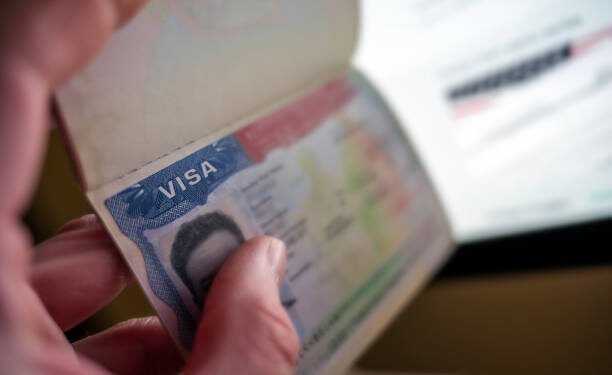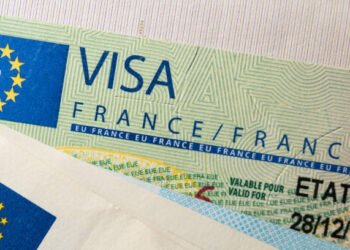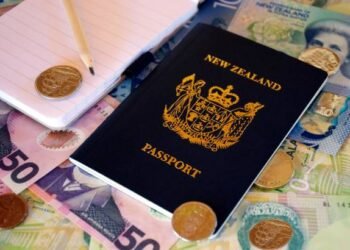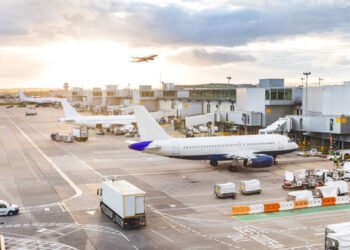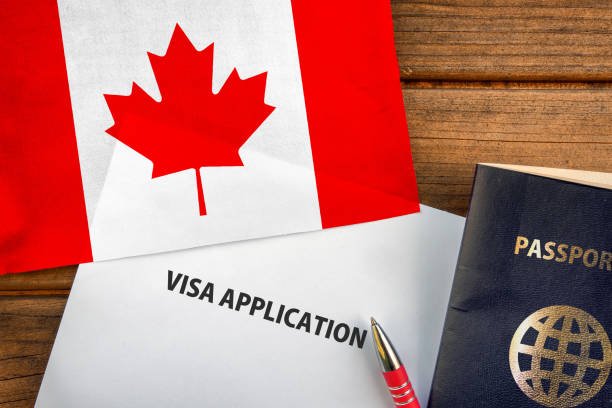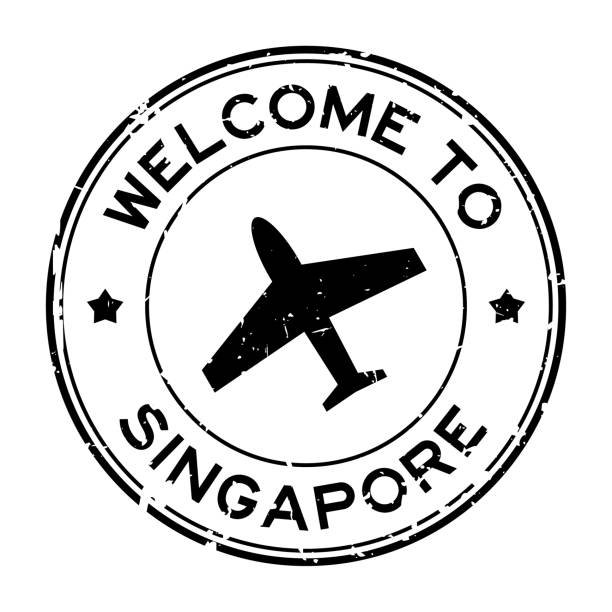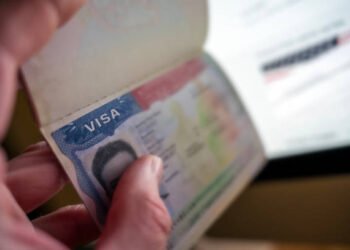Advertisement
Immigrants across the world are constantly attracted to the United States because of the opportunities offered in employment, education, and settlement. Visa applications have always been seen as one of the most decisive steps toward moving into the country legally. In 2025, the United States immigration system continues to provide multiple visa categories. Some of these visas require sponsorship from an employer, institution, or relative, while others can be applied for without direct sponsorship.
Understanding the differences between visa categories, their requirements, and the procedures is important for applicants. If the right type of visa is applied for, the chances of approval are increased, while mistakes in selection can lead to rejection.
Advertisement
The following sections will present an expanded breakdown of top USA visas in 2025, categorized into sponsored visas and non-sponsored visas.
Sponsored USA Visas in 2025
Sponsored visas are those in which an individual or organization in the United States must formally support the immigrant’s application. This support often comes in the form of a job offer, family petition, or institutional acceptance.
Employment-Based Sponsored Visas
H-1B Visa (Specialty Occupations)
The H-1B visa continues to remain one of the most in-demand visas in 2025. It is used by foreign workers employed in specialty occupations such as IT, engineering, finance, and medical fields.
- Sponsorship Requirement: A U.S. employer must file a petition on behalf of the foreign worker.
- Duration: Initially granted for 3 years, extendable to 6 years.
- Key Benefit: Pathway to permanent residency through employer sponsorship.
L-1 Visa (Intra-Company Transfer)
This visa is designed for employees of multinational companies who are transferred from an office outside the U.S. to a branch inside the U.S.
- Sponsorship Requirement: The employer must apply for the transfer.
- Duration: One to three years initially, extendable.
- Key Benefit: The visa allows specialized knowledge staff and executives to work and expand U.S. company branches.
O-1 Visa (Individuals with Extraordinary Ability)
The O-1 visa is available for individuals with proven extraordinary ability in sciences, arts, business, education, or athletics.
- Sponsorship Requirement: A U.S. agent or employer must provide a contract.
- Duration: Up to 3 years with renewals.
- Key Benefit: Recognition of global talent and access to high-level opportunities.
Family-Sponsored Visas
IR and F Categories (Immediate Relatives and Family Preference)
These visas are issued to close family members of U.S. citizens and lawful permanent residents.
- Sponsorship Requirement: U.S. family members must file a petition.
- Key Categories:
- IR-1 for spouses of U.S. citizens.
- IR-2 for children of U.S. citizens.
- F1-F4 for broader family categories.
- Key Benefit: A direct pathway to permanent residency (Green Card).
Education-Based Sponsored Visas
F-1 Student Visa
This visa is provided to international students accepted into U.S. academic institutions.
- Sponsorship Requirement: Acceptance from a recognized U.S. school (Form I-20).
- Key Benefit: Students are allowed to study full-time and may work on-campus.

J-1 Exchange Visitor Visa
This visa supports individuals participating in cultural and educational exchange programs.
- Sponsorship Requirement: A sponsoring program or institution must issue the DS-2019 form.
- Key Benefit: The visa promotes exchange and skill-building.
Investor-Sponsored Visas
EB-5 Immigrant Investor Visa
Investors who can contribute at least $800,000 in a U.S. enterprise that creates at least 10 jobs are eligible for this visa.
- Sponsorship Requirement: The investment project is recognized and approved by U.S. immigration authorities.
- Key Benefit: It leads directly to Green Card eligibility.
Non-Sponsored USA Visas in 2025
Non-sponsored visas allow applicants to apply independently without the need for a U.S. employer, family member, or organization to support their application. These visas are highly sought after because they provide autonomy in the immigration process.
Diversity Visa (DV) Lottery Program
The Diversity Visa Lottery, also called the Green Card Lottery, offers up to 55,000 visas annually to applicants from underrepresented countries.
- Sponsorship Requirement: None.
- Eligibility: Applicants must meet education or work experience standards and come from an eligible country.
- Key Benefit: Direct pathway to permanent residency.
Tourist and Visitor Visas
B-1/B-2 Visa (Business and Tourism)
These visas are issued for short-term travel for business meetings, conferences, medical care, or tourism.
- Sponsorship Requirement: None (though invitation letters may be used to support the case).
- Duration: Usually 6 months.
- Key Benefit: Provides entry for temporary visits without long-term ties.
Student and Self-Sponsored Opportunities
Although F-1 and J-1 visas require institutional sponsorship, students often consider self-funded study programs. In these cases, even though technical sponsorship exists, the financial burden is carried entirely by the applicant, making the process self-driven.
Other Independent Options
ESTA (Electronic System for Travel Authorization)
For nationals of visa waiver program countries, short stays (90 days or less) are permitted for business or tourism.
- Sponsorship Requirement: None.
- Key Benefit: Simple online application, faster approval.
Comparisons Between Sponsored and Non-Sponsored Visas
Job Opportunities
- Sponsored visas: Provide direct access to employment opportunities.
- Non-sponsored visas: Do not grant employment rights (with limited exceptions).
Processing Times
- Sponsored visas: May take longer due to petitions.
- Non-sponsored visas: Generally processed faster (e.g., B-1/B-2, ESTA).
Settlement Prospects
- Sponsored visas: Higher chance of permanent residency.
- Non-sponsored visas: Usually temporary with limited immigration pathways.
How to Choose Between Sponsored and Non-Sponsored Visas
When deciding, applicants must carefully evaluate:
- Their purpose of travel (study, work, tourism, or settlement).
- The duration of stay.
- Availability of a sponsoring employer, institution, or family.
- Long-term settlement goals such as a Green Card.
Challenges Faced by Applicants in 2025
- High Competition: For H-1B and DV Lottery, demand is extremely high.
- Strict Regulations: Rules are tightened to prevent misuse.
- Financial Proof: Many visas require solid financial backing.
- Documentation Issues: Missing or inaccurate information often causes rejection.
Hidden Tips for Securing a USA Visa
- Applications must be started early to avoid last-minute delays.
- All documents must be double-checked for accuracy.
- Strong ties to the home country must be demonstrated for non-immigrant visas.
- Professional immigration advice should be sought when applying for high-value visas like EB-5.
- Preparing for the visa interview with confidence and honesty is critical.
How to Apply for USA Visas With and Without Sponsorship in 2025
Applying for a U.S. visa in 2025 requires proper documentation, a step-by-step process, and clarity on whether the visa type needs sponsorship (from an employer, university, or family) or can be processed independently. The application process varies depending on the visa category, but some standard procedures are followed by all applicants.
Step 1: Identify the Correct Visa Category
1.1 Sponsored Visa Applications
- For work visas such as H-1B, L-1, O-1, or EB-3, an employer must file a petition (Form I-129 or Form I-140) on behalf of the applicant.
- The sponsorship confirms that the employer is offering a legitimate job and is committed to covering necessary legal and immigration fees.
1.2 Non-Sponsored Visa Applications
- Visas like Tourist (B1/B2), Student (F-1), or Diversity Visa Lottery can be applied for directly without employer sponsorship.
- The applicant is required to prove sufficient funds, ties to the home country, and the intention to return after their stay.
Step 2: Complete the Online Application (DS-160 or DS-260)
- Non-Immigrant Visas (e.g., F-1, B1/B2, H-1B) → DS-160 Form must be completed online.
- Immigrant Visas (e.g., Green Card, EB Categories, Diversity Visa) → DS-260 Form is required.
- Applicants must upload a valid passport-style photo and ensure that all information matches their passport and supporting documents.
Step 3: Pay the Visa Fees
- Fees differ depending on visa types:
- Tourist/Student Visas (F-1, B1/B2) → $185 (non-refundable).
- Work Visas (H-1B, L-1, O-1) → $190–$205.
- Immigrant Visas (Green Card, EB, Family-based) → Around $325 plus USCIS filing fees.
- Payment must be made before scheduling the visa interview.
Step 4: Gather Supporting Documents
Supporting documents are crucial for approval. They vary depending on whether sponsorship is required:
4.1 For Sponsored Visas:
- Job offer letter from the U.S. employer.
- Form I-797 (Notice of Action) or approval notice from USCIS.
- Employment contract outlining salary and job role.
- Proof of qualifications (degrees, certifications, licenses).
4.2 For Non-Sponsored Visas:
- Proof of financial ability (bank statements, scholarship letters, or affidavits of support).
- Admission letter for students (F-1, J-1 visas).
- Proof of ties to home country (property ownership, employment contracts, or family commitments).
Step 5: Schedule and Attend the Visa Interview
- Applicants must schedule an interview at the nearest U.S. Embassy or Consulate.
- During the interview, consular officers assess:
- Purpose of travel.
- Financial capacity to sustain stay.
- Intentions to return (for non-immigrant visas).
- Legitimacy of job offer or sponsorship (for work visas).
Tip: Applicants must be confident, clear, and provide consistent answers matching their documents.
Step 6: Biometrics and Security Clearance
- Fingerprints and a digital photo will be taken during the appointment.
- Additional background checks may be required for certain nationalities or sensitive job roles.
Step 7: Visa Approval or Denial
- If approved, the visa is stamped into the applicant’s passport within a few weeks.
- If denied, a letter explaining the reason (under section 214(b) or other grounds) is provided.
Step 8: Entering the United States
- Travelers must present their visa and supporting documents to U.S. Customs and Border Protection (CBP) officers at the port of entry.
- Sponsored visa holders must show employer documentation.
- Non-sponsored visa holders must show financial proof and return tickets (especially for tourists and students).
Pro Tips to Increase Approval Chances
- Always provide accurate financial documentation to prove self-sufficiency.
- For sponsored visas, ensure your employer is verified and has a strong immigration history.
- For non-sponsored visas, show strong ties to your home country to avoid suspicion of overstay.
- Apply well ahead of deadlines to avoid delays, especially for high-demand visas like H-1B or F-1.
FAQs About USA Visas With and Without Sponsorship in 2025
Q1: Which visa is easiest to get without sponsorship?
The B-1/B-2 visitor visa is considered one of the easiest, though it is only temporary.
Q2: Can the Diversity Visa be applied for multiple times?
Yes, but only one entry is permitted per year. Multiple entries may cause disqualification.
Q3: Which sponsored visa offers the fastest route to a Green Card?
Family-sponsored immediate relative visas and EB-5 investor visas provide direct Green Card opportunities.
Q4: Can students on F-1 visas apply for permanent residency later?
Yes, many students transition to work visas like H-1B and then apply for permanent residency.
Q5: Do non-sponsored visas allow employment?
Most non-sponsored visas (e.g., B-1/B-2, ESTA) do not allow employment. Exceptions include winning the Diversity Visa Lottery.

Conclusion
In 2025, the United States continues to provide a wide range of visas for international applicants. Both sponsored and non-sponsored categories have distinct advantages and limitations. Sponsored visas often provide stronger pathways to employment and permanent residency, while non-sponsored visas are more flexible for temporary travel and personal independence.
Applicants are encouraged to carefully evaluate their goals and circumstances before choosing the visa type. By avoiding mistakes, preparing properly, and applying strategically, successful entry into the United States can be secured.

